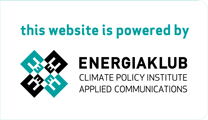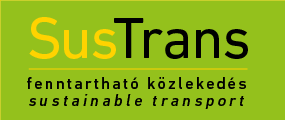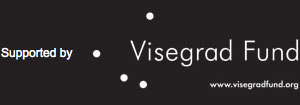Results of transport roundtable meeting no. 1 in Budapest
Organizer: ENERGIAKLUB
Date: 13th June 2012
Venue: Hotel Mercure Korona, Budapest, Hungary
The topic of the roundtable meeting was energy efficiency and energy saving in urban transport, while its aim on the one hand was to reveal the obstacles and conflicts that hinder progress in this field, and on the other hand to identify the available possibilities and tools for the more successful reducing of energy consumption. For the sake of this common objective we believe that the comprehensive participation of the transport sector is highly important, consequently in this regard we consider the meeting successful, as it was attended by not only high level representatives of the governmental and scientific sphere but also by the market and the non governmental sphere (the list of participants can be found in the report pdf, which can be downloaded from the left side menu).
Actuality of the topic – EU expectations
As a first step it is important to note that the concept of transport energy efficiency forms an organic part of both the EU and the national transport policy aspirations, thus the professional sphere is inevitably obliged to deal with this issue. “The paramount goal of European transport policy is to help establish a system that underpins European economic progress, enhances competitiveness and offers high quality mobility services while using resources more efficiently. In practice, transport has to use less and cleaner energy […]” – states the EU White Paper 2011, which serves as the framework document for the European transport policy. In order to reach these comprehensive aims it specifies the following policy targets:
- Reducing transport CO2 emissions by 60% by 2050;
- Significantly reducing oil dependency;
- Preventing the further growth of traffic congestions.
These three objectives are closely related to the aspects of energy efficiency and energy saving, which connection is highlighted also by the impact study of the White Paper as it associates the three objectives with the following objectives: less energy consumption, cleaner energy use and improved infrastructure use.
A further important statement of the document is that the aimed 60% reduction in CO2 emissions cannot be reached merely by technological intervention, consequently other tools, e.g. mobility management also become indispensible. This shows why it is important to have a complex approach to the topic and consequently why the roundtable meeting was designed to be multi-faceted.
Energy efficiency in the national transport policy
The statements of the Unified Transport Development Strategy 2007-2020 (UTDS) of Hungary, serving as a pillar for the national transport policy, unequivocally support the fact that this topic needs to be managed in a distinguished manner.
The UTDS sets the goal of improving energy efficiency: “Our aim is the enhanced moderation of environmental loading along with the increasing of mobility. […] The improvement of energy efficiency, the increasing of the rate of renewable energy use are indispensible in accomplishing the EU targets and in improving the quality of life” (horizontally impacting factors, general goals). The concept of energy efficiency is featured in several parts of the strategy, e.g. in the chapter about passenger transport, the field of sustainable intervention highlights the following: “satisfying the need for mitigating global climate change, i.e. the systematic and tool-oriented increasing of energy efficiency, the enhanced use of renewable energy sources in transport and altogether the reduction of the final energy use in transport.”
Thus it is clear that the improving of energy efficiency is not an optional task, but a definite obligation prescribed by the EU and national legislation. Consequently we believe it is important to feature the matters in dispute more stressfully in the national transport policy decision making and professional work, and to have them incorporated into the general thinking according to their true significance.
Tasks
We consider it a fundamental task for the profession to reach consensus regarding the interpretation of the concepts energy efficiency and energy saving, and as a result to create a widely accepted unified definition, which may serve as the basis of the elaboration and realization of targets (e.g. the target numbers of the favourable modal split in urban passenger transport, the extent of support given to public transport with traffic management tools etc.).
Results of the meeting
The roundtable can be considered outspokenly successful when considering the fact that several conflicts and obstacles had been unearthed. Consequently the professionals gained a broader view on the clashes need to be taken into account, furthermore several recommendations, solutions and inspiring examples were shared as well, which are worth considering and if possible, putting into practise by adapting them to the national circumstances. The following pages contain the summary of the occurent obstacles and solutions.
The further lesson learnt from the roundtable is that it is necessary to facilitate the deepening of cooperation between science and decision making. Formulating the technological aspects of the future scenario for transport is a major challenge due to the “severe symptoms” of the sector, and this is especially true when it comes to the selection of the technologies to be favoured. It is indispensible to use the already available, comprehensive complete life cycle analyses to support the decisions.
The following steps
Based on the lessons learnt we find it important to continue working towards a consensus on transport energy efficiency with a similarly broad participation.
It is important to note that the following summary of the opinions on the following pages do not form the consensus of the roundtable meeting, but rather a collection of issues and an attempt to address them. The aim of the summary is the collective representation of the various views; consequently certain statements may contradict one another.
THE PREDOMINANCE OF PASSENGER CAR TRANSPORT
How can the proportion of more sustainable transport modes be increased in the modal split of passenger transport?
Sustainable urban transport is an indispensible precondition of the livable city, which is efficient both environmentally and energetically. However, it is necessary to reach consensus regarding the parameters of the livable city. Defining the target numbers of the transport modal split is an important requirement for a more effective cooperation within the transport sector.
Modal shift is an important tool of energy efficiency and energy saving. Possible alternatives for passenger car transport and road freight transport are public transport and rail freight transport respectively. Price sensitivity plays a key role as well, as the proportion of the passenger car transport will decrease in such an economic situation in which it is not payable to travel by car. However, this also requires a more modern and larger public transport supply in order for it to become an attractive and satisfying alternative. This includes the optimizing of the ticket system and making it user friendly.
Not the vehicle, but the human is the basic element of transport. Besides transport, urban planning plays a role as well in connecting the citizens with the services.
It is a question to what extent do the global economic aims support the sustainability aims. It is difficult to change the current state as long as the aim of the national economy is growth and the car industry serves as the engine to it, furthermore as long as owning and using a passenger car is considered as a point of honour in society (the forecasts of the trends of growth in vehicle numbers have continuously under-estimated the situation prevailing in reality).
The car industry provides a significant part of the GDP. If the aim is to decrease the proportion of the passenger car transport, the question arises how this process would influence the volume of the national car production. To explore this relationship, complex economic analyses are required, as there not necessarily is a direct cause and effect coherence between these. In case there is, further analyses may help estimate whether other industry branches (e.g. bus production) would appear or start booming, which are capable of substituting the fall out in car production.
Road tariffs can be more effective than fuel taxes, since the prior would apply to hybrid, electric, LPG vehicles as well, which are also road users. In case the vehicle fleet was suddenly replaced by electric or LPG vehicles, the government would lose significant revenues which is not in its interest, and would aim to replace these. A significant replacement in the vehicle fleet would bring forth the assessment of taxes on alternative fuels as well.
VEHICLE TECHNOLOGY
Which are the most efficient transport tools of the future in respect of energy and costs?
Comparing vehicles with different operation
It is very important to have access to those information/studies, which compare the energy efficiency, environmental and economic characteristics of vehicles with different operation on tthe basis of the complete life cycle studies (e.g. including the costs and environmental load related to the generation and transportation of electricity in the case of electric vehicles). It is absolutely uncertain that when taking the results of the complete life cycle analyses into account, those solutions would prove to be the most efficient and environmentally friendly, which are generally considered that way currently. The costs and the environmental load caused by the production and the decomposition of the vehicles also have to be taken into consideration.
It is necessary to take into account the need for the service infrastructure for electric or LPG vehicles. As long as these are not provided, fleet replacement will be uneconomic for entrepreneurs.
The relation between environmental harm and energy efficiency is worth consideration as well: even though modern passenger vehicles consume less and are less air-pollutant, still the overall CO2 emissions have increased, for which the quantity of operating vehicles and the frequency of their usage is responsible (rebound-effect).
Public procurement
It as a fundamental problem with the public procurement of vehicles that the energy efficient, modern vehicles are always more expensive, while economic aspects gain priority in the decision making and evaluating mechanism, despite the fact that on the long term the less expensive solution is not necessarily the most cost efficient.
However, the criteria of public procurement are a question of political will. Private entrepreneurs have their way difficultly due to the strict procurement conditions that apply to them. The method supported by the state is not proportionate in its prescriptions that apply to small and large enterprises. However, the development of the green public procurement system might yield some improvement in this field.
Energy use
If the replacement of older public transport vehicles is not possible, there are other options to achieve more effective energy use to a certain extent. E.g. in the case of trams a 15-20% energy consumption reduction can be realized by modernizing the drive. Another possibility is the use of certain fuel additives, which improve the emission factors of the vehicle and at the same time lessen fuel consumption. These options should be taken into account by public transport operators. However, the fact that there are no calls and tenders solely for energy efficiency purposes is a hindrance in utilizing support designed for modernizing the public transport fleet.
TRANSPORT PLANNING, TRAFFIC MANAGEMENT
What kind of planning/management tools can help decrease the need for transport and ensure the continuous flow of traffic?
The aim is to enable access to the given service with the least transport possible. Besides transport planning, urban planning plays a key role as well.
It is necessary to have the urban politics define the goals, for which the transport planning needs to find the solutions. The continuous and mutual communication between these two fields is indispensible for the livable city.
The decentralized, intelligent node communication systems rate as up-to-date systems today, as they can be specified to the given traffic conditions. However, this is only viable if the central control is in one hand. In the case of nodes controlled by several parties more harmonizing is necessary.
Giving priority to the pubic transport (e.g. by bus lanes) is favourable for buses, but it is a hindrance for passenger car traffic (e.g. due to the unused road surface). However, practical examples show that the presence of dedicated bus lanes does not necessarily slow down the flow of overall traffic.
It is practical to combine various tools, e.g. bus lanes + traffic-dependant regulation, intelligent lanes etc.
Unlike the former „axioms,” the „green wave” and the traffic-dependant regulation are combinable.
The shopping malls erected in the place of former city edge factories generate new mobility needs, which strengthen the importance of conscious urban planning.
School and workplace mobility plans, car sharing, etc. and the combination of these can effectively contribute to the development of a livable city in the aspect of transport.
A possibility for decreasing the need for transport is home-based or location independent work, which is able to render a certain amount of daily travels unnecessary.
RAISING AWWARENESS
How can sustainable transport modes be made more attractive?
The promotion of alternative transport modes is a question of communication. The main objective of communication is the overwriting of hardened stereotypes in the heads of planners/decision makers and users as well.
Positive, confirming communication messages which offer solutions are more effective in facilitating the changes, while trying to reach road users in a manner of confronting them with the facts and calling them to account does not inspire but infuriate.
Negative communication has a role during emergency situations, e.g. smog alert.
It is important, however, to use positive communication messages only if the message is backed up by reality, whether speaking of P+R systems or public transport supply.
Cycling
The following messages are essential for promoting cycling:
- The bicycle is not (exclusively) a sportswear, and it is not „the transport tool of the poor”. The image of people riding expensive bikes in elegant/fashionable clothing can be a catchy campaign element.
- Cycling is economic, it is a way to save money and it is an environmentally friendly transport mode.
- Cycling is trendy and it is the new urban status symbol (see the world famous Cycle chic blog).
- It is important to have decision makers and leaders set example: there are settlements, where the mayor himself rides a bike to work in a suit.
- Cycling needs to be communicated as an advantageous public transport mode (e.g. the community cycle network in London).
Reservations against cycling: cycling can be circumstantial if the necessary workplace infrastructure is not available (changing room, shower, bicycle-rack etc.), which makes cycling unattractive to a lot of people.
Public transport
The precondition of promoting public transport is to have the appropriate supply provided. It is risky to promote P+R systems if the public transport company would be unable to manage the excess traffic.
However, the development of an appropriate communication strategy is primarily a question of approach and only secondarily a financial issue. The example of Bogotá suits this idea: the communication message (which is in line with reality) is that public transport is up to par and comfortable, it is highly valued and its socially accepted, it is not in the least embarrassing to switch from passenger car to public transport.
Raising awareness needs to be combined with other tools, like developing an appropriate parking system. The lack of the latter has a negative impact on such important economic branches as tourism, since the city cannot provide the arriving tourists with sufficient parking places.






